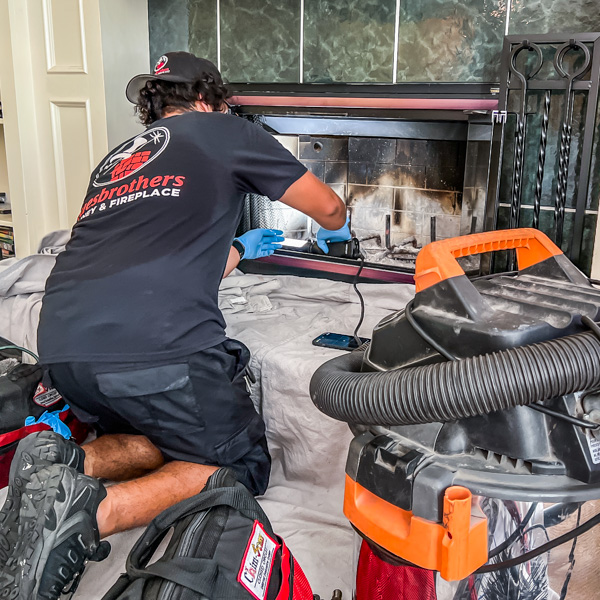As a fireplace owner, you’ve no doubt heard about creosote. Unfortunately, many people think it means their chimney is dirty and little else. However, we’ll show you why creosote is dangerous and how you can protect your home and family.
 What is Creosote?
What is Creosote?
The goal when burning wood or other fossil fuels is to burn them as completely as possible; however, that rarely happens. Whether it’s unseasoned firewood or poor airflow, incomplete combustion produces volatiles that travels with the smoke up the chimney.
As the smoke cools in the chimney, it condenses with water and other chemicals and sticks to the walls. This residue is called creosote.
Creosote comes in three stages.
Stage One: The first coating of creosote is typically a dust-like substance called soot. Soot isn’t flammable, and it’s easy to clean at this stage.
Stage Two: As the soot thickens, it becomes sticky and tougher to remove. Stage two becomes a fire hazard because the sticky form is partially combustible under the right conditions.
Stage Three: Finally, as the tar-like creosote layer gets thicker like a glaze, it restricts airflow and is highly likely to catch fire. Stage three buildup is difficult to remove and requires a certified chimney sweep.
Why Is Creosote Dangerous?
As mentioned, in its later stages, creosote becomes flammable, but how much creosote buildup does it take, and at what temperatures are you at risk? According to the Chimney Safety Institute of America (CSIA), most chimney fires occur because of dirty chimneys. The problem with creosote buildup is that it doesn’t take much to become a concern. The CSIA says, Even just a 1/8” buildup of creosote is enough to cause a chimney fire.
Okay, but chimney fires are rare, right?
Well, according to the National Fire Protection Association (NFPA), in 2011, they estimated that 53,600 U.S. home fires were caused by home heating equipment. The leading factor that contributed to those fires was the failure to clean equipment, such as chimneys. Moreover, a 2022 report released by the NFPA said, Heating equipment fires resulted in an estimated 480 civilian deaths, 1,370 civilian injuries, and one billion dollars in direct property damage each year from 2016 to 2020.
How to Protect Yourself From Creosote & Chimney Fires
In light of this unsettling news, it’s not all gloom and doom because preventing a chimney fire from obstructions and creosote buildup is easy.
Schedule Annual Inspections & Cleaning
The most important thing you can do — and the easiest — is schedule annual cleaning and inspection by a certified professional chimney sweep. Certified chimney sweeps have the necessary training and follow industry standards to ensure your safety.
Use Seasoned Firewood
The first thing you can do is burn properly seasoned firewood. Green or unseasoned wood produces more smoke and volatiles, which means more creosote.
Avoid Over-Firing
Over-firing means burning more fuel than your fireplace can handle. Many people think adding more wood to get a hotter fire means a warmer home, but it’s dangerous, especially if you have creosote in your chimney because the high temperatures can ignite it.
Install a Chimney Cap
Chimney caps prevent debris and animals from getting into the chimney, causing a blockage, which could lead to increased temperatures and fire.
Call the Fluesbrothers
When residents in Kansas City need a chimney service company they can trust, they call The Fluesbrothers.
Why? Because we have over a decade of experience, our technicians are licensed, insured, and certified by the Chimney Safety Institute of America. We’re also a full-service chimney company that handles everything. Whether it’s chimney sweeping, inspection, repair, maintenance, or dryer vent cleaning, there’s no job too big or small for our team.
Get your chimney winter-ready and ensure you’re protected by scheduling an appointment today at 913-236-7141 or fill out our online form, and we’ll get right back!




